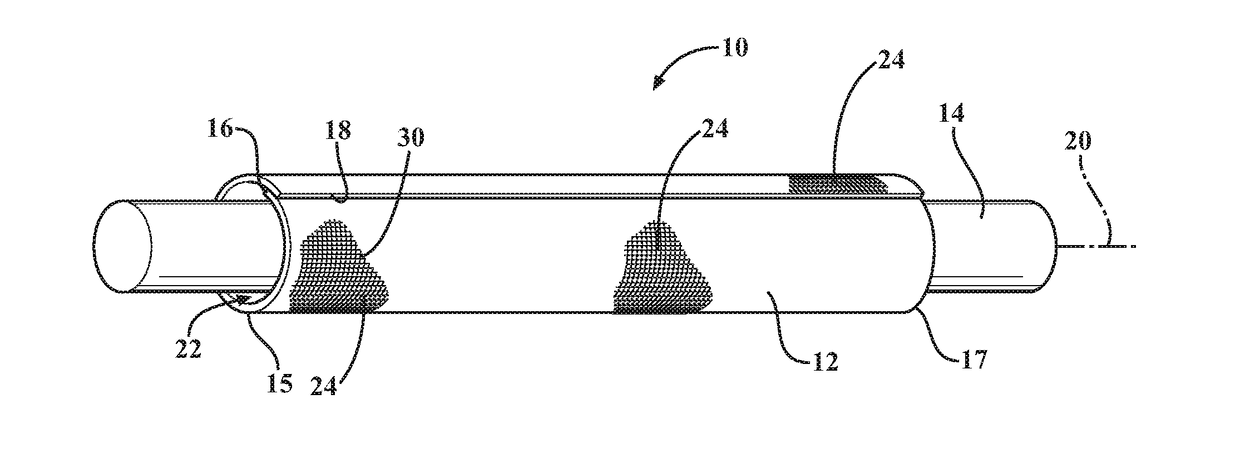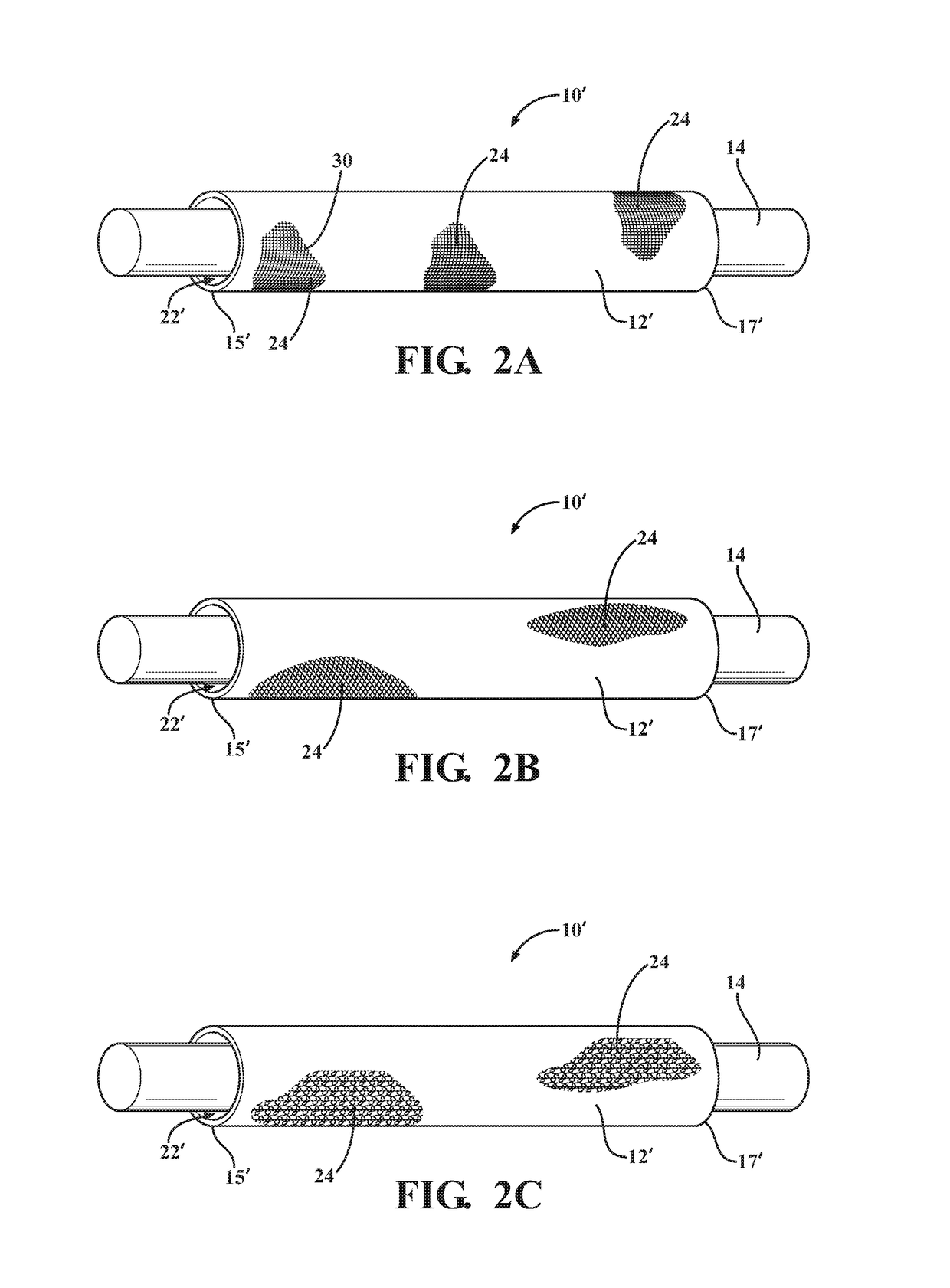Abrasion resistant textile sleeve, improved multifilament yarn therefor and methods of construction thereof
a textile sleeve and multi-filament technology, applied in the field of textile sleeves, can solve the problems of increasing cost, bulk, stiffness and weight of the sleeve, and reducing so as to reduce the cost, weight and the outer envelope of the sleeve, and improve the abrasion resistance of the sleev
- Summary
- Abstract
- Description
- Claims
- Application Information
AI Technical Summary
Benefits of technology
Problems solved by technology
Method used
Image
Examples
Embodiment Construction
[0041]Referring in more detail to the drawings, FIGS. 1A-1C show schematic representations of textile sleeves, referred to hereafter as sleeve 10, constructed in accordance with various aspects of the invention. The sleeve 10 is shown having a wrappable elongate wall 12 for routing and protecting an elongate member 14, such as wires, a wire harness, or tube, for example, from exposure to abrasion and the ingress of contamination, debris and the like. The elongate wall 12 has opposite edges 16, 18 extending lengthwise along a longitudinal, central axis 20 between opposite ends 15, 17, wherein the edges 16, 18 are configured to be wrapped into overlapping relation with one another in “cigarette wrapped” fashion to fully enclose the elongate member 14 within a central cavity 22 of the sleeve 10. The cavity 22 is readily accessible along the full length of the central axis 20 so that the elongate member 14 can be readily disposed radially into the cavity 22, and conversely, removed from...
PUM
| Property | Measurement | Unit |
|---|---|---|
| melt temperature | aaaaa | aaaaa |
| temperature | aaaaa | aaaaa |
| diameter | aaaaa | aaaaa |
Abstract
Description
Claims
Application Information
 Login to View More
Login to View More - R&D
- Intellectual Property
- Life Sciences
- Materials
- Tech Scout
- Unparalleled Data Quality
- Higher Quality Content
- 60% Fewer Hallucinations
Browse by: Latest US Patents, China's latest patents, Technical Efficacy Thesaurus, Application Domain, Technology Topic, Popular Technical Reports.
© 2025 PatSnap. All rights reserved.Legal|Privacy policy|Modern Slavery Act Transparency Statement|Sitemap|About US| Contact US: help@patsnap.com



